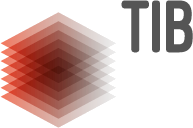Evin Anlam ve Temsiliyetinin Erken Cumhuriyet Dönemi Dergilerinden “Çocuk Haftası” (1943-1964) Dergi Kapakları Üzerinden Okunması
“Çocuk Haftası” Dergisinde Evin Anlamı
DOI:
https://doi.org/10.14744/tasarimkuram.2022.41713Keywords:
Meaning of home, architectural representation, media, chiildren's magazines, visual analysis, Çocuk Haftası MagazineAbstract
Body is the first space that human beings exist in, and home is the second that they are able to represent their own essence through the focuses they created. Subsequent to the body, home is the special shelter of the inner world and every individual needs a shelter to secure their physical existence. Although this shelter contains different physical characteristics and personal meanings according to the living conditions of each person and the connection they establish with it, home is defined as the first place in which people feel comfortable. While this connection between the home space and the homeowner gets closer and develops, “home” starts to separate from the common image in many people’s minds and gains its own subjective meaning. A house can only be one’s “home” with his fears, past, dreams, childhood, lonely sides, and other different meanings. Home and person assign various meanings to each other by ruling over one another alternately. Visual media is one of the representations that make up the meaning attributed to home. Small children experience the visual and written narrative first of all in the house that they live in, then through the visual media, especially through the children’s literature which provides children a platform to think about the notions they have never thought about before. The visual media created for children is of great importance because of containing implicit meanings and forming the first representations of the notions in children’s minds. When a child reencounters any recorder notion, the mind evokes the first representation of that notion and begins to create meaning with reference to that prototype representation. In other words, through the children’s media, the child starts to establish various relationships and produce meanings. Media is of great importance in having the potential to create and transform a certain ideology by influencing the beliefs and values of people. Popular culture, which affects people’s thinking styles to a great extent, is also transmitted mostly through the media and plays a major role in daily life. In this context, one of the popular culture products, children’s magazines, have been found valuable in terms of representing the everyday life routines, outside world and home space with the social, political, and spatial characteristics of the period of publication in a certain continuity. Even though many studies in different disciplines have been conducted on home to investigate its meaning, there are no studies on how the meaning of home is created in the children’s media. This article aims to understand the power of visuals in children’s magazines to produce, represent and transform the meaning of home. First of all, the covers of the Çocuk Haftası magazine were analyzed according to whether they contained the image of the house or not. Then covers containing the image of home were classified according to Sixsmith’s “Home’s Meaning Categories”. It was aimed to make a systematic reading by creating a visual analysis of those covers. “Schroeder’s Critical Visual Analysis Variables” were used as a reference in the visual analysis of the covers categorized. As a result of this study, it was seen that in Çocuk Haftası Magazine, the house was represented as introverted; gender roles, family structure, spatial construction of the house, social life inside and outside the home were very defined. There were many subjects represented in the covers of the magazine, such as; the family structure, perception of child and childhood, educational understanding of the period, domestic objects, parent figures, apartments, village houses, city drawings, spatial organization, popular colors, home arrangements of the period, etc. Social and spatial drawings with men, women, and modern objects which reflect the idea of Western life have been found in the covers. While the spaces, people, objects, and events representing a modern way of life are drawn in more detail, the drawings including the Anatolian lifestyle were drawn in less detail. On the one hand, the artist glorifies the western idea of life; on the other hand, he tries to throw the idea of eastern life into the background. It obviously reveals that the artist has the power to convey the message he wants to give to the reader through drawings. A child who follows this magazine thinks about what is home, what does it consist of, how is the physical structure of it, who enters and leaves the house, what programs does the house consist of; namely, he thinks about the meaning of home with its personal, social and physical dimensions. It has been determined that the visual messages in children’s magazines constitute many representations about the meaning of home, even if they are not apparently spatial.



















